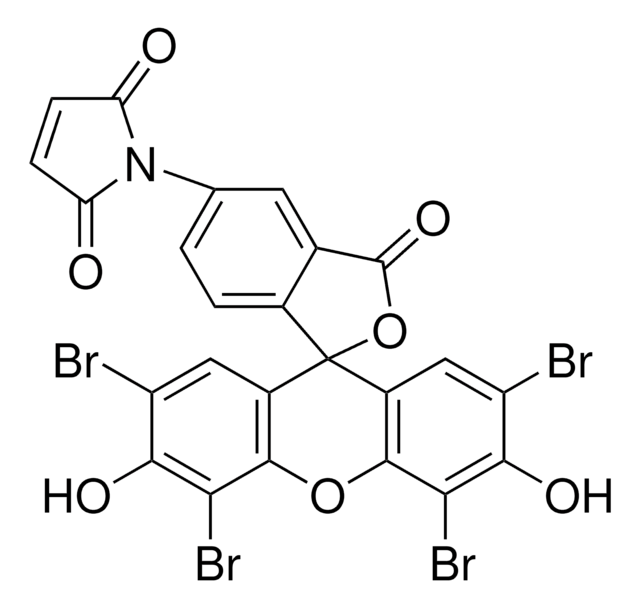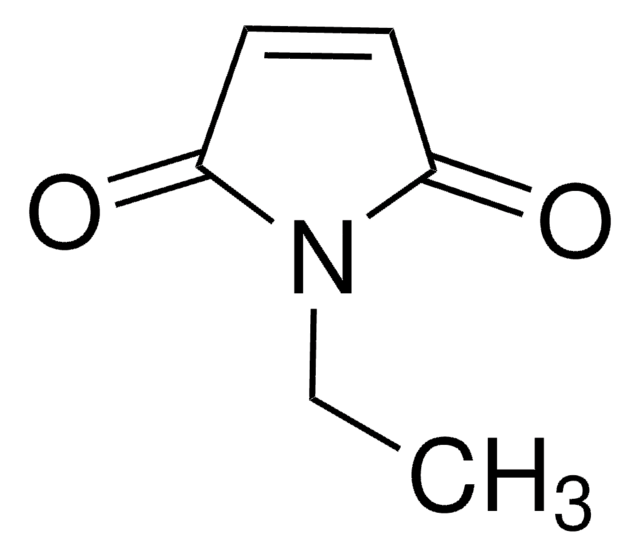71725
Sodium dodecyl sulfate
BioUltra, for molecular biology, ≥99.0% (GC)
Synonym(s):
Dodecyl sodium sulfate, Dodecyl sulfate sodium salt, Lauryl sulfate sodium salt, SDS, Sodium lauryl sulfate
About This Item
Recommended Products
grade
for molecular biology
description
anionic
product line
BioUltra
Assay
≥99.0% (GC)
form
powder
mol wt
micellar avg mol wt 18,000
aggregation number
62
impurities
DNases, none detected
RNases, none detected
insoluble matter, passes filter test
phosphatases, none detected
proteases, none detected
loss
≤3% loss on drying, 20 °C (HV)
CMC
7-10 mM (20-25°C)
mp
204-207 °C (lit.)
transition temp
cloud point >100 °C
solubility
H2O: 0.1 M at 20 °C, clear, colorless
density
0.455 g/cm3
anion traces
chloride (Cl-): ≤200 mg/kg
phosphate (PO43-): ≤1 mg/kg
cation traces
Al: ≤5 mg/kg
Ba: ≤5 mg/kg
Bi: ≤5 mg/kg
Ca: ≤10 mg/kg
Cd: ≤5 mg/kg
Co: ≤5 mg/kg
Cr: ≤5 mg/kg
Cu: ≤5 mg/kg
Fe: ≤5 mg/kg
K: ≤200 mg/kg
Li: ≤5 mg/kg
Mg: ≤5 mg/kg
Mn: ≤5 mg/kg
Mo: ≤5 mg/kg
Ni: ≤5 mg/kg
Pb: ≤5 mg/kg
Sr: ≤5 mg/kg
Zn: ≤5 mg/kg
SMILES string
[Na+].CCCCCCCCCCCCOS([O-])(=O)=O
λ
0.1 M in H2O
UV absorption
λ: 260 nm Amax: 0.04
λ: 280 nm Amax: 0.02
HLB
40
suitability
suitable for electrophoresis
InChI
1S/C12H26O4S.Na/c1-2-3-4-5-6-7-8-9-10-11-12-16-17(13,14)15;/h2-12H2,1H3,(H,13,14,15);/q;+1/p-1
InChI key
DBMJMQXJHONAFJ-UHFFFAOYSA-M
Looking for similar products? Visit Product Comparison Guide
General description
In protein biochemistry, SDS plays a pivotal role in protein extraction and SDS-PAGE (sodium dodecyl sulfate-polyacrylamide gel electrophoresis). Its ability to denature proteins by disrupting their secondary and tertiary structures allows for their uniform migration during gel electrophoresis, enabling the separation and analysis of proteins based on their molecular weight. This technique has become an indispensable tool for identifying and characterizing proteins in biological samples.
Beyond its role in protein analysis, SDS also finds utility in nucleic acid extraction and various hybridization techniques. Its detergent properties aid in the lysis of cells and the release of nucleic acids, facilitating their subsequent purification and analysis. Additionally, SDS is employed in hybridization techniques to promote the annealing of complementary nucleic acid strands, enabling the detection and analysis of specific DNA or RNA sequences.
Application
- as an ionic surfactant in polystyrene (PS) particle suspension for surfactant-based experiments
- in phosphate-buffered saline as a component of lysis buffer to homogenize myometrium and leiomyoma tissue
- as a component of lysis buffer to dissolve formazans
- as a component of high-salt nuclear extraction buffer
Biochem/physiol Actions
Features and Benefits
- Suitable for molecular biology and biochemical research
- BioUltra grade for your sensitive applications
- Free from DNase, RNase, NICKase and protease
- Tested for trace levels of Anions and Cations
- Tested to confirm low levels of heavy metal contamination, ensuring suitability for various applications
- Undergoes hydrolysis at high temperatures, especially in acidic medium
Other Notes
comparable product
Signal Word
Danger
Hazard Statements
Precautionary Statements
Hazard Classifications
Acute Tox. 4 Inhalation - Acute Tox. 4 Oral - Aquatic Chronic 3 - Eye Dam. 1 - Flam. Sol. 2 - Skin Irrit. 2 - STOT SE 3
Target Organs
Respiratory system
Storage Class Code
4.1B - Flammable solid hazardous materials
WGK
WGK 2
Flash Point(F)
338.0 °F
Flash Point(C)
170 °C
Personal Protective Equipment
Certificates of Analysis (COA)
Search for Certificates of Analysis (COA) by entering the products Lot/Batch Number. Lot and Batch Numbers can be found on a product’s label following the words ‘Lot’ or ‘Batch’.
Already Own This Product?
Find documentation for the products that you have recently purchased in the Document Library.
Customers Also Viewed
Our team of scientists has experience in all areas of research including Life Science, Material Science, Chemical Synthesis, Chromatography, Analytical and many others.
Contact Technical Service




